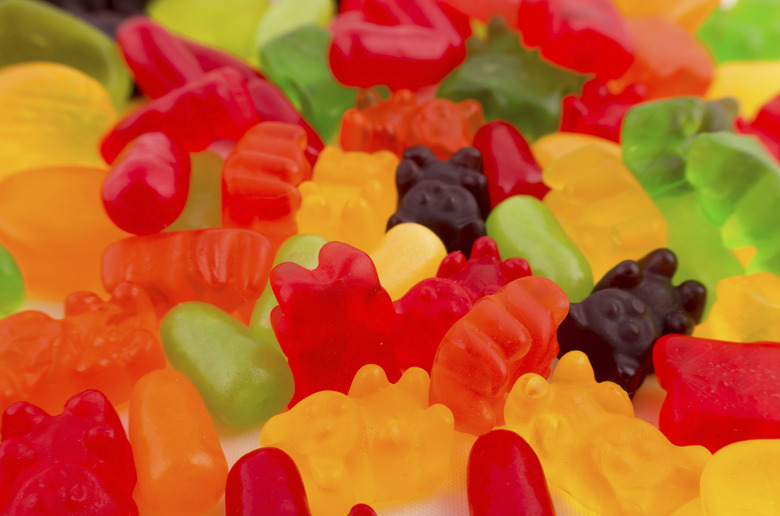Osmosis Experiments With Gummy Bears
Gummy bears offers kids a way to get interested in and understand osmosis – something about the brightly colored, tasty candy captivates young students. In osmosis experiments with gummy bears, the bears swell up to several times their normal size, which can be quite amusing and unexpected for kids and adults alike. Teachers like gummy bear osmosis experiments because they are simple, entertaining and easy to explain and understand.
Osmosis Terms
Osmosis Terms
Understanding key terms is crucial to learn what happens during gummy bear osmosis experiments. Osmosis occurs when liquids flow through a semi-permeable membrane from a diluted to a concentrated environment. Semi-permeable membranes allow some molecules to pass through them – most frequently liquids – but not others. Scientists explain this by using the terms hypertonic and hypotonic: hypertonic solutions have higher concentrations of solutes – solids dissolved in liquids – while hypotonic ones have a comparatively lower concentration. Diffusion is the active movement of a substance from hypertonic to hypotonic, until an isotonic solution – equal concentration – is reached.
Gummy Bear Composition
Gummy Bear Composition
Made from gelatin, water and a sweetener like sugar or corn syrup, gummy bears start as a liquid and cool into a chewy, gummy solution. The chewiness of gummy bears is due to the presence of gelatin, whose molecules are chain-like and create a solid matrix.
Gummy Bear Experiment: Tap Water
Gummy Bear Experiment: Tap Water
The first experiment involves soaking your gummy bears overnight in plain water. Prior to soaking, have your students measure the height, width, and depth of the gummy bear, and record this information in their lab books. Place the gummy bears in cups of water – one per student – and set aside. Then discuss hypotheses – what do the students think will happen to the bears? The next day, the bears will have expanded, as water moved by diffusion through the bear's semi-permeable membrane to reach an isotonic state where the concentration of water molecules inside and outside the bear were the same. The students should measure the bears again and use their before-and-after data to calculate the percentage of growth.
Gummy Bear Experiment: Salt Water I
Gummy Bear Experiment: Salt Water I
Conduct the same experiment, this time soaking new gummy bears in salt water. Again ask your students to predict the outcome: Will the addition of salt change the outcome of the experiment in any way? Your students may be surprised at the results. New gummy bears soaked in salt water will shrink, but imperceptibly so. The bears' gelatin construction will cause it to hold its shape and size, for the most part, even when water leaves the bear.
Gummy Bear Experiment: Salt Water II
Gummy Bear Experiment: Salt Water II
Soak the original, water-expanded gummy bears from your first experiment in salt water, and ask your students to predict the outcome. The bears will shrink as osmosis causes water to leave the gummy bear.
Cite This Article
MLA
Rogge, Rebecca. "Osmosis Experiments With Gummy Bears" sciencing.com, https://www.sciencing.com/osmosis-experiments-gummy-bears-10042742/. 13 March 2018.
APA
Rogge, Rebecca. (2018, March 13). Osmosis Experiments With Gummy Bears. sciencing.com. Retrieved from https://www.sciencing.com/osmosis-experiments-gummy-bears-10042742/
Chicago
Rogge, Rebecca. Osmosis Experiments With Gummy Bears last modified March 24, 2022. https://www.sciencing.com/osmosis-experiments-gummy-bears-10042742/
